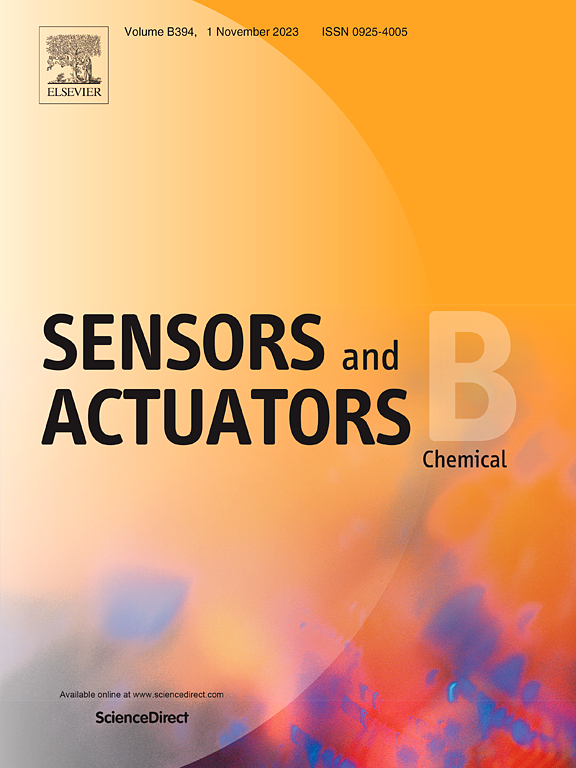无泵微流体步进乳化快速高通量制备琼脂糖和结冷胶液滴
IF 8
1区 化学
Q1 CHEMISTRY, ANALYTICAL
引用次数: 0
摘要
阶梯式乳化通过限制的急剧变化产生液滴。它已成为一种有前途的替代流动聚焦技术,用于高通量生成液滴。在这里,我们报告了一种阶梯乳化技术,包括两个连续的移液步骤,在5分钟内从粘性水凝胶溶液中产生超过10万个液滴,仅使用15µL的样品体积。使用琼脂糖(0.1% w/v)和结冷胶(0.7% w/v),我们平均分别生成1,17,556±±10,299(平均值±±SEM)和1,75,704±±8,771个液滴。我们还生成了直径为9µm的水滴,这在采用步进乳化的情况下很少有报道。此外,我们将红细胞(RBC)或反应混合物(如核酸)封装在无泵技术产生的液滴内。最后,我们利用环介导的等温扩增技术(LAMP)成功地扩增了疟原虫恶性疟原虫和这些液滴内的SARS-CoV-2质粒的DNA。能够(a)从粘度范围比之前报道的更高的粘弹性分散相中通过步乳化生成液滴,(b)在5分钟内从非常小的样品体积中生成100,000个水凝胶液滴,(c)在液滴生成过程中成功封装细胞或生物反应混合物,以及(d)在这些水凝胶液滴内进行DNA扩增。开启了该平台技术的许多即时护理应用的可能性。本文章由计算机程序翻译,如有差异,请以英文原文为准。
Rapid and high-throughput generation of agarose and gellan droplets by pump-free microfluidic step emulsification
Step emulsification generates droplets by a sharp change in confinement. It has emerged as a promising alternative to flow-focusing technology for high-throughput generation of droplets. Here we report a step emulsification technique consisting of two successive pipetting steps to generate more than 100,000 droplets from viscous hydrogel solutions in 5 min and using only 15 µL sample volume. We generated, on average, 1,17,556 10,299 (mean SEM) and 1,75,704 8771 droplets using agarose (0.1 % w/v) and gellan (0.7 % w/v) respectively. We also generated water droplets with 9 µm diameter which has rarely been reported using step emulsification. Further, we encapsulated red blood cells (RBC) or reaction mixtures (such as nucleic acids) inside droplets generated by our pump-free technique. Finally, we successfully demonstrated DNA amplification from the malarial parasite P. falciparum and a SARS-CoV-2 plasmid inside these droplets using loop-mediated isothermal amplification (LAMP). The ability to (a) generate droplets by step emulsification from a viscoelastic dispersed phase with a higher range of viscosities than what has been reported earlier, (b) generate > 100,000 hydrogel droplets from a very small sample volume within 5 min, (c) successfully encapsulate cells or a biological reaction mixture during droplet generation, and (d) perform DNA amplification within these hydrogel droplets, opens up possibilities of many point-of-care applications of this platform technology.
求助全文
通过发布文献求助,成功后即可免费获取论文全文。
去求助
来源期刊

Sensors and Actuators B: Chemical
工程技术-电化学
CiteScore
14.60
自引率
11.90%
发文量
1776
审稿时长
3.2 months
期刊介绍:
Sensors & Actuators, B: Chemical is an international journal focused on the research and development of chemical transducers. It covers chemical sensors and biosensors, chemical actuators, and analytical microsystems. The journal is interdisciplinary, aiming to publish original works showcasing substantial advancements beyond the current state of the art in these fields, with practical applicability to solving meaningful analytical problems. Review articles are accepted by invitation from an Editor of the journal.
 求助内容:
求助内容: 应助结果提醒方式:
应助结果提醒方式:


